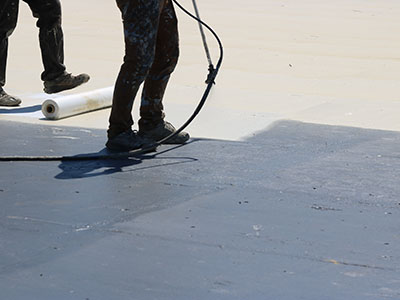Fabric-reinforced roofing systems have revolutionized commercial building protection, offering durability and cost-effectiveness for modern construction projects. Understanding the benefits, installation process, and maintenance requirements of fabric-reinforced roofing solutions is step 1 in determining if this is the best system for your needs.
Understanding Fabric-Reinforced Roofing Systems
Fabric-reinforced roofing combines high-strength synthetic fabrics with specialized roofing membranes to create a robust waterproofing system. The reinforcement fabric, typically polyester or fiberglass, significantly enhances the membrane’s tensile strength and puncture resistance while maintaining flexibility for building movement.
Key Benefits for Commercial Applications
Commercial property owners increasingly choose fabric-reinforced roofing for several compelling reasons. The system provides superior weatherproofing capabilities, with exceptional resistance to UV radiation, extreme temperatures, and severe weather conditions. The reinforced membrane can withstand heavy foot traffic during maintenance and equipment servicing while maintaining its structural integrity.
The energy efficiency benefits are particularly noteworthy. White or light-colored fabric-reinforced roofing systems reflect solar radiation, reducing cooling costs during summer months. This reflective property contributes to building sustainability goals and can help achieve LEED certification points.
Installation Process and Considerations
Professional installation of fabric-reinforced roofing requires careful attention to detail and specific expertise. The process typically begins with thorough surface preparation, including cleaning and repairs to the existing substrate. Contractors then apply the base layer, followed by embedding the reinforcement fabric into the wet coating. Additional layers are applied to create a seamless, waterproof barrier.
Weather conditions during installation are crucial, as temperature and humidity can affect adhesion and curing times. Most manufacturers recommend installation when temperatures are between 50°F and 90°F for optimal results.
Long-Term Performance and Maintenance
With proper installation and maintenance, fabric-reinforced roofing systems can last 20-30 years. Regular maintenance should include:
- Biannual inspections to check for damage or wear
- Prompt repairs of any tears or punctures
- Regular cleaning to prevent debris accumulation
- Recoating every 10-15 years, depending on wear and exposure
Cost Considerations and ROI
While initial installation costs may be higher than traditional roofing systems, fabric-reinforced roofing offers excellent return on investment through:
- Reduced maintenance requirements
- Lower energy costs
- Extended service life
- Minimal repair needs
- Enhanced building protection
Choosing the Right System
When selecting a fabric-reinforced roofing system, consider factors such as:
- Local climate conditions
- Building use and accessibility requirements
- Budget constraints
- Energy efficiency goals
- Warranty requirements
Consulting with our experienced professionals can help determine the most appropriate system for your specific commercial application.
By investing in fabric-reinforced roofing, you can protect your investment while potentially reducing long-term maintenance costs and environmental impact. This innovative roofing solution continues to evolve with advancing technology, offering increasingly efficient and sustainable options for modern commercial construction. Call us today to learn more or schedule your consultation.

